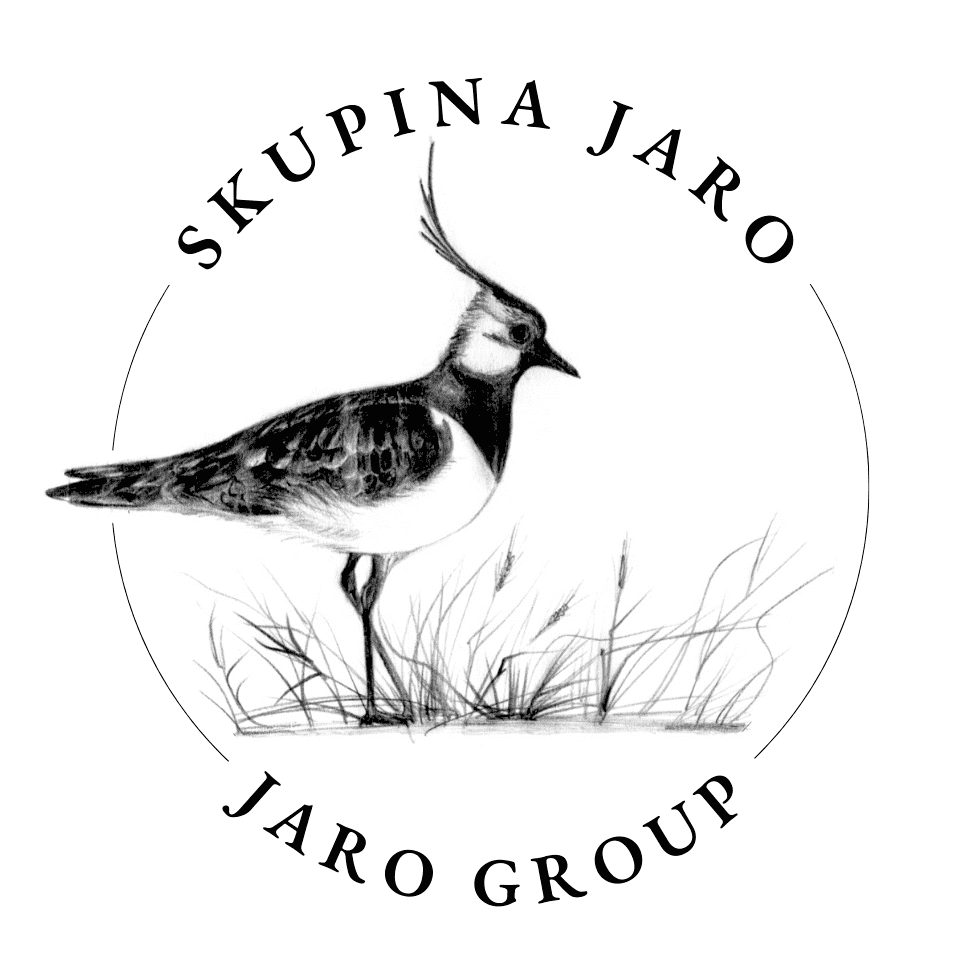Did you know,
that nature needs not just protection,
but also active care?
That’s why we’re here
and you are welcome to join us.
JARO is a network of associations from Central Europe working hands-on in the field. We’ve been protecting nature across Europe and beyond since 1989
35+
years of experience
5000+
acres under our care

International conservation group JARO
A few steps ahead in nature protection
For over 30 years, we have been taking care of nature both in Europe and abroad, managing diverse habitats at hundreds of locations, from lowlands to the alpine peaks.
Our 12 associations manage hundreds of valuable areas – from grasslands that simmer under the sun to wetlands, where we often find ourselves knee-deep in water and buzzing with life. Yet we do not back down, because we know exactly why we are doing what we are doing..
At our events, we like to talk to both young and old about how everything in nature works and how the things are interconnected. And to ensure that everyone can learn about the often complex topics of nature conservation, we created this website.
We all love naturally looking countryside.
Buzzing meadows and pastures, interwoven with groves and paths, lined by orchards and alleys that lead to a beautiful forest. Many of us remember this picture from our childhood. However, the landscape no longer works as it used to and it needs active help. Not just for the plants and animals that live there, but also for ourselves. Without a healthy landscape, we humans cannot keep our health either.


Not all forests and meadows are created equal
These days, forest protection and tree planting get most of the attention. But in our work, it’s often the opposite: we focus on protecting open habitats from overgrowth. By limiting shrubs and trees, we give space to small but essential species that keep the landscape alive. A dense forest can be wonderful in the right place, but it’s not ideal everywhere. And an overgrown meadow is no better. What really matters in a healthy landscape is diversity.
Healthy landscape is like an unbroken soccer net
Think of a healthy landscape like a soccer net. When the net is intact, it holds together – and stops the ball, as it should. But if you start firing soccer-sized cannonballs at it, it begins to tear. One or two holes may not matter. But once there are ten, the net stops working. It loses its purpose.
And that’s exactly what’s happening to our nature. As species disappear and key features like rivers, ponds, and meadows vanish, the landscape no longer functions as it should.That’s why we’re creating islands of biodiversity – pockets of healthy ecosystems that can serve as starting points when damaged land begins to heal.
We aim to protect as many species as we can, because diversity makes ecosystems stronger – and more beautiful.

Why do we focus on butterflies?
Butterflies are indicators of a healthy landscape. They quickly and sensitively react to changes in their environment, they show us the state the landscape is in, and indicate whether human activity in those areas is sustainable. When butterflies start to disappear, it means the landscape is not healthy.
If butterflies thrive, other pollinators are likely to benefit as well, along with insects in general, plants, and larger animals that feed on insects. In short, everyone benefits. Additionally, one-third of the world’s agricultural production directly depends on pollinators.
While elephants need protection from poachers, in the case of butterflies, we focus on restoring their natural habitats. We work with one of the leading butterfly breeders in the world and recreate habitats tailored to their exact needs. Thanks to this, we were able to support and even reintroduce several locally extinct species back into the wild.
Our projects
Have a glance at what we do
*details on some of these topics are still under preparation
Water
in the landscape
pools, wetlands, stork oases, lakes
Conservation and support of butterflies
in butterfly kingdoms and breeding stations
Grazing reserves
for
wild ungulates and domestic animals
Education
online and in person
field trips, trainings, lectures, volunteer camps and events
Rescue stations for wild animals
injured by human
activity
Linear
structures
roads, railways, nature under the wires
Light forests and conservation of hoopoes
lightening forests, maintenance of zoo trees
Quarries
full of biodiversity
linking mining with nature conservation
Tropical
projects
working with conservationists in Indonesia and Congo
Conservation events and camps where you can help nature
Besides one-day events, we can meet at several conservation camps and weekend events. Detailed info about each of them will be available throughout the year, but their dates for this year are already known, so you can put them in your schedule.
Donate to nature
Support our crew, which works towards the world
where humans and nature can both thrive. You can donate via this form, or by a bank transfer to our public collection account: 2801040757/2010
BIC/SWIFT: FIOBCZPPXXX
IBAN: CZ2220100000002801040757
Thank you!
